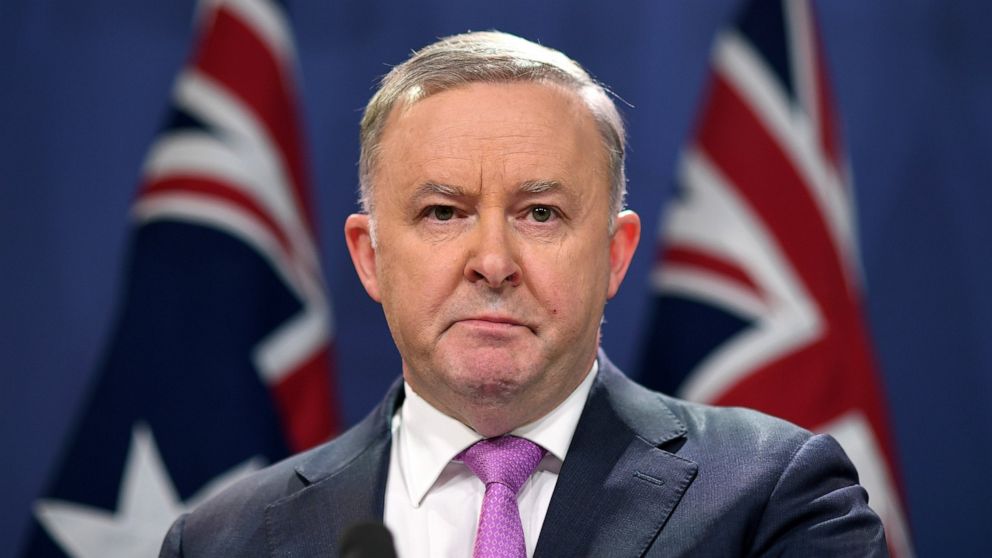Half way through the campaign, how are the major party leaders faring?
- Written by Stephen Mills, Honorary Senior Lecturer, School of Social and Political Sciences, University of Sydney

More than two weeks in, we know one thing for sure. This time, the election campaign does matter.
In decades past, when voters were more loyally rusted on to the major parties, news cycles more sedate, policy platforms fixed and “safe” seats truly safe, it was arguable that election outcomes were largely determined before the campaigns began.
But in 2025, the campaign period has witnessed a dramatic shift[1] in voting intentions, as measured by public opinion polls.
Before the campaign, Labor trailed. Prime Minister Anthony Albanese seemed flat-footed, burdened by a poor track record in the 2022 elections and the 2023 Voice referendum.
But even as Cyclone Alfred blew itself out, parliament returned, and the budget was brought down, Labor’s poll numbers were improving. This trend continued through the first weeks of the campaign, such that Labor now seems the likely winner, either in minority or perhaps majority.
Why? Election campaigns can reveal how leaders and their teams behave under pressure. They also require trust and lock-step coordination between the leader and the party’s team of campaign professionals.
Unflashy incrementalism
Albanese has performed solidly and been relentlessly on-message and on-brand. His campaign has rolled out a well-prepared procession of announcements on Medicare urgent care clinics, pharmaceuticals, childcare and TAFE, each with local funding attached.
Albanese does not campaign with Hawke-like charisma, Keating-like oratory or Whitlam-like policy. His one truly visionary change commitment – the Voice – collapsed in a heap.
Instead, as he has shown over the last two weeks, his true identity is as a (Chifley-like?) incrementalist. He boasts a strong grasp of systems – health, roads, renewables – and his campaign is all about fixing, improving and expanding those systems within practical fiscal constraints.
His vision of the future is the present that just works better for more people.
Fattening the policy pig
By contrast, Opposition Leader Peter Dutton seemed ready to shoot the lights out, as an uncompromising conviction politician exploiting voter grievances about cost-of-living issues.
But he wasted a large part of his first week recovering from an off-strategy indulgence about living in Kirribilli House[3] (“we love the harbour”), and much of the second week explaining his backflip[4] on public service working conditions.
The first was a campaign blunder, pure and simple. But the second spoke to a deeper malaise within the Coalition about policy development. The Coalition appeared unprepared for the cut and thrust of the campaign.
Combined with blithe me-tooing of Labor promises on health and roads, and incomplete announcements on cutting foreign student numbers and reserving natural gas for domestic use, the backflip suggested Coalition policy-making has become a bit random: a series of tactical choices, not a strategic plan for government.
Contrary to long-standing Liberal Party campaign wisdom[6] that “you can’t fatten a pig on market day”, this time the Liberals are trying to force-feed their policy pig en route to the market.
Dutton has been much more effective pitching his fuel excise promise. The decision to eschew Labor’s budgeted tax cuts for an immediate reduction at the bowser was bold, instinctive and entirely consistent with the Coalition’s outer-metropolitan electoral strategy.
It took until the second week, but the daily scenes of Dutton pumping petrol into cars – “and utes[7]” as he always adds – is steadily reinforcing his message, however wearying it has become for the travelling press party.
The comfort of incumbents
The first leaders’ debate highlighted this difference. Both leaders remained poised and polished (especially creditable by Dutton given he learned of his father’s heart attack[8] immediately beforehand).
But Albanese simply had more to talk about, more first-term achievements and more commitments on his future shopping list. Dutton articulated grievances without providing many policy solutions.
The contest on the economy was a draw: Dutton conjures up Albanese’s non-delivered pledge on power prices, while Albanese points to high employment and downward trends on inflation and interest rates.
All this has played out against the backdrop of the Donald Trump tariff wars. Like previous mid-campaign crises – Tampa in 2001 and, for those with very long memories, the Kennedy assassination in 1963 – global uncertainty reinforces an Australian incumbent. Albanese’s measured response struck the right note.
Dutton has repeatedly tried to insert himself into the tariff story – difficult for an opposition – but had to take risks to do so. His assertion that AUKUS and ANZUS should be somehow involved was left hanging once Liberal icon John Howard made clear[10] he disagreed.
With policy speeches delivered, and rival policies[11] on housing finally released, the campaign is in its final week, interrupted by Easter, before early voting starts.
The challenge for Albanese will be to maintain his momentum, in all his unflashy, incrementalist style. Labor is likely to ramp up its Dutton-Trump comparison. Dutton will need to put further flesh on the bones of putting Australia “back on track[12]”.
References
- ^ dramatic shift (theconversation.com)
- ^ Lukas Coch/AAP (photos.aap.com.au)
- ^ Kirribilli House (theconversation.com)
- ^ backflip (theconversation.com)
- ^ Mick Tsikas/AAP (photos.aap.com.au)
- ^ campaign wisdom (theconversation.com)
- ^ and utes (www.liberal.org.au)
- ^ heart attack (www.smh.com.au)
- ^ Jason Edwards/AAP (photos.aap.com.au)
- ^ made clear (www.abc.net.au)
- ^ rival policies (theconversation.com)
- ^ back on track (peterdutton.com.au)


















